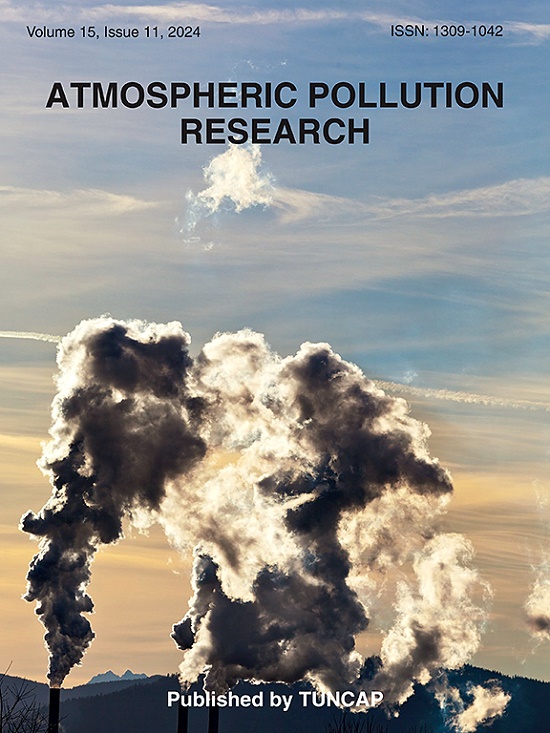美发行业挥发性有机化合物(voc)的排放特征、环境影响和职业健康风险评估
IF 3.9
3区 环境科学与生态学
Q2 ENVIRONMENTAL SCIENCES
引用次数: 0
摘要
美发产品中普遍存在挥发性有机化合物(VOCs),这意味着在美发过程中,这些产品会释放出挥发性有机化合物,对室内大气环境和人体健康都有害。本研究重点对各类美发活动中的VOCs进行采样,探讨美发活动类型与VOCs排放的相关性。研究发现,头发处理对VOCs浓度的贡献最大,为1294.11 μg/m3。含氧挥发性有机化合物(OVOCs)是所有美发活动中最重要的VOCs成分,特别是在头发处理、普通烫发、普通烫发定型和染发中贡献了80%以上的VOCs。挥发性有机化合物(OVOCs)和烯烃是影响臭氧形成的主要成分,它们的浓度贡献很大,化学反应性也很强。染发、冷烫、冷烫定型、普通烫发、普通烫发、染发的二次有机气溶胶形成势SOAFP分别为0.76、0.93、0.85、0.86、0.93、1.36 μg/m3。丙烯醛和乙醛是主要的非致癌物质,丙烯醛的非致癌风险在4.04 - 22.98之间,远远超过安全阈值。最显著的致癌风险与1,3-丁二烯和乙醛有关。因此,必须对美发沙龙的管理和美容师的经营实行严格的规定。本文章由计算机程序翻译,如有差异,请以英文原文为准。
Emission characteristics, environmental impact, and occupational health risks assessment of volatile organic compounds (VOCs) in the hairdressing sector
The common presence of volatile organic compounds (VOCs) in hair products means that VOCs are emitted from these products during hairdressing procedures, which can be harmful to both the indoor atmospheric environment and human health. This study focused on sampling VOCs during various hairdressing activities and discussing the correlation between the types of hairdressing activities and the emissions of VOCs. The study revealed that hair treatment had the highest contribution to the VOCs concentrations, at 1294.11 μg/m3. Oxygenated volatile organic compounds (OVOCs) were the most significant VOCs components in all hairdressing activities, especially contributing over 80% of the VOCs in hair treatment, ordinary perm, hair setting of an ordinary perm, and hair coloring. OVOCs and alkenes were the primary components that significantly influenced the formation of ozone due to their substantial contribution of concentration and their chemical reactivity, respectively. The secondary organic aerosol formation potential (SOAFP) for hair treatment, cold wave, hair setting of a cold wave, ordinary perm, hair setting of an ordinary perm, and hair coloring were 0.76, 0.93, 0.85, 0.86, 0.93, and 1.36 μg/m3, respectively. Acrolein and acetaldehyde were the main non-carcinogenic species, with acrolein posing a non-carcinogenic risk ranging from 4.04 to 22.98, far exceeding the safety threshold. The most significant carcinogenic risks were associated with 1,3-butadiene and acetaldehyde. Therefore, it is imperative to impose stringent regulations on the management of hair salons and the operations of hairdressers.
求助全文
通过发布文献求助,成功后即可免费获取论文全文。
去求助
来源期刊

Atmospheric Pollution Research
ENVIRONMENTAL SCIENCES-
CiteScore
8.30
自引率
6.70%
发文量
256
审稿时长
36 days
期刊介绍:
Atmospheric Pollution Research (APR) is an international journal designed for the publication of articles on air pollution. Papers should present novel experimental results, theory and modeling of air pollution on local, regional, or global scales. Areas covered are research on inorganic, organic, and persistent organic air pollutants, air quality monitoring, air quality management, atmospheric dispersion and transport, air-surface (soil, water, and vegetation) exchange of pollutants, dry and wet deposition, indoor air quality, exposure assessment, health effects, satellite measurements, natural emissions, atmospheric chemistry, greenhouse gases, and effects on climate change.
 求助内容:
求助内容: 应助结果提醒方式:
应助结果提醒方式:


